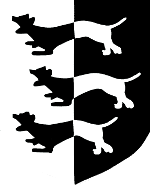

More than a thousand years of monastic rule of a former noble land.
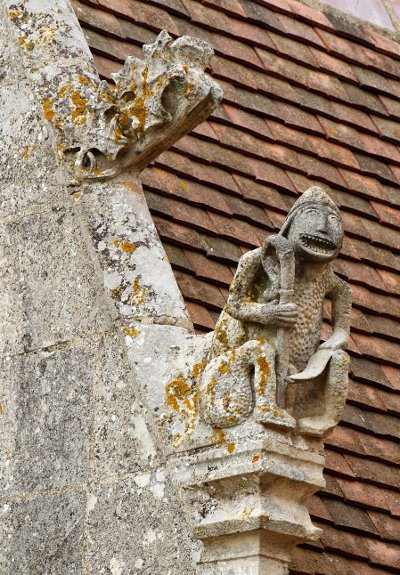
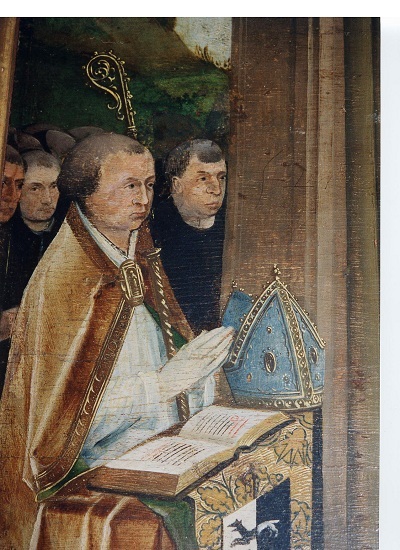
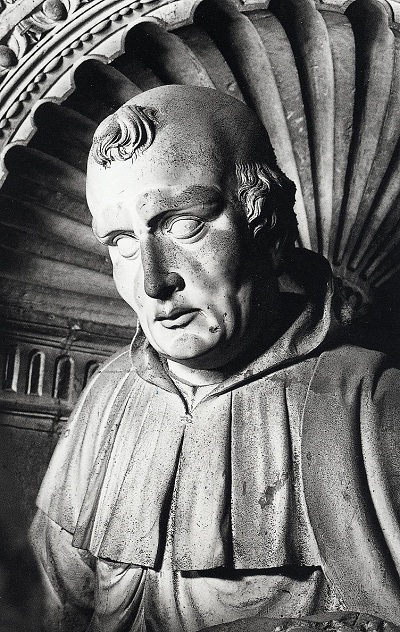
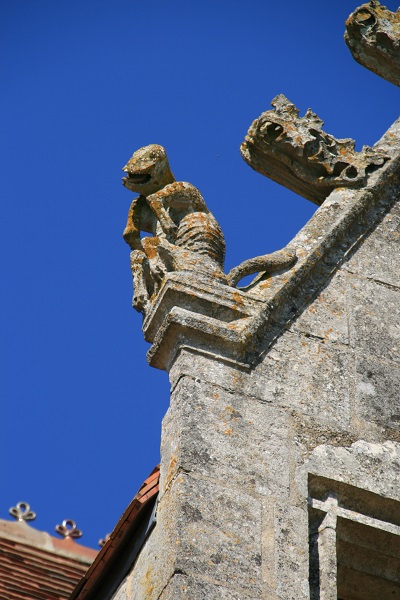
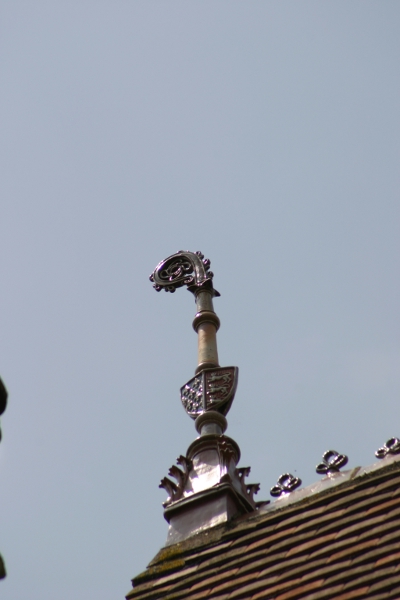
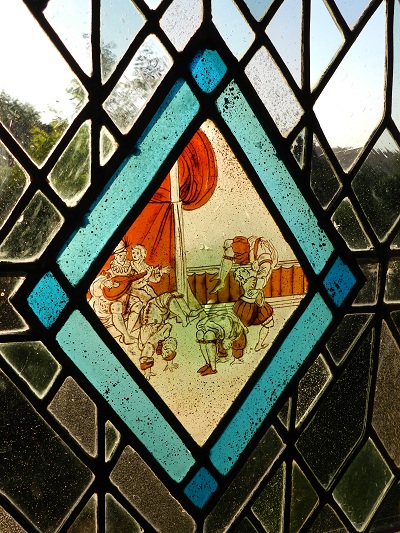
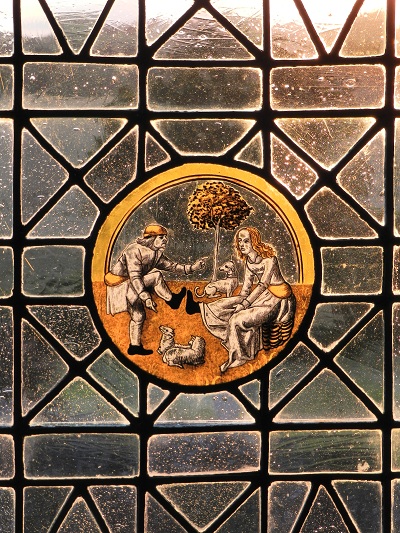


Legend tells us of the successive hermitages located on the very spot of Saint Catherine's chapel from as early as the 8th century.
Around 990, Hughes II, Count of Main, defeated Yves, the founder of the most dreaded lineage of the house of Bellème. In order to help the Abbey Saint Pierre et Saint Paul (now the Abbey Siant Pierre de La Coûture) back on its feet after its destruction by the Vikings, the Count endowed the abbey with various estates out of which that of Moullins.
The first abbot of the refunded abbey sent, in 995, twelve monks and a prior to Moullins (a community as large as that of Rielvaux Abbey in North Yorkshire). They soon erected a large priory, probably in wood.
The priory prospered during 3 centuries. In 1288, Charles, King of Jerusalem and Sicily, Count of Anjou and Maine, grants rights to hold two fairs each year to the monks of La Couture, on their domain of Moullins
In 1417, the Prior of Moullins was sent to Falaise, where King Henry V was encamped, to "buy" a letter of protection in order to avoid the priory being confiscated or ransacked. However, in February 1418, the prior sent a letter to the invaders complaining of the damage and looting perpetrated by the soldiers.
Private residence of La Coûture's abbots
Abbot Michel Bureau undertook the construction of a private residence. Born in Champgénéteux (a village in Maine), Dom Michel joined the Abbey in 1480, and was later sent to Paris for further studies. Michel Bureau was to obtain a PHD in theology from the Sorbonne. In 1496, he became abbot.
Since 1399, abbots of La Coûture enjoyed the dignity of bishops, with mitre, ring and cross. They were bishops "in partibus, i.e. in charge of a bishopric which was yet to be re-conquered, as it was lost at the time of the crusades. Dom Michel was bishop of Hieropolis. He was a man of importance and made sure that not only the prerogatives of the Abbey were respected, but also his own.
His quarrels with the high-born Bishop of Le Mans, Philippe, Cardinal of Luxemburg, were remembered by many, as most of the time Dom Michel had upper hand.
Michel Bureau's effigy stands among the "Saints de Solesme" (the group of saintly people carved in the nave of the Abbey of Solesme). Abbot Michel's coat-of-arms - three ermines, half in silver and the other in beige colour - can be seen on one of the finials of the highest tower at Moullins.
During the 3rd attack of the plague in 20 years which struck Le Mans, this time in 1515, Dom Michel sent part of the community to shelter in Volnay Priory and took the others, including all the dignitaries to Moullins.
On August 18, 1516, when his army was driving the Pope's forces out of Bologna, King Francis I wrested from Pope Leon X the "Concordat", giving the French king the right to appoint all bishops and Abbots in his kingdom , consequently permanently changing the system of canonical elections.
The death of Michel Bureau, in 1518, was to place the Abbey of La Coûture at the centre of a formidable power struggle between, the young King Francis I, and, the Parliament together with the Sorbone University. In face of this opposition, and in order to assert his authority, (he had ascended the throne three years before), the king battled during 6 months to make his decision prevail.
From this date, the Abbots of La Couture, usually clerics and occasionally laymen, would exclusively be appointed by the King. Among the list of beneficiaries, stands out the Cardinal de Bourbon (recognized as "King Charles X" by the Catholic party, after the death of King Henri III. They refuse to acknowledge the Protestant legitimate heir, who was to become Henri IV) and Eugène de Savoie, Prince of Carignan. The end of the system of canonical elections in the Abbeys of Maine would compromise durably the economic recovery enjoyed in this province since the end of the One Hundred Years' war.
Four of the abbots appointed by the king, Martin de Beaune Semblançay, Adam Fumée, his nephew, Nicolas Fumée,, and Charles de Froulay, took a real interest in their private residence of Moullins.
Archbishop of Tours and Abbot of La Coûture (1522-1527), Martin de Beaune Semblançay adorned Sainte Catherine's chapel with a magnificent altar piece ordered from the Tours workshop of Guillaume Regnault whose works are now displayed in the Louvre.
Adam Fumée, abbot from 1527 till 1546, held large gathering of philosophers, humanists and other people with Protestant leanings. Upon some of the court members' outrage, King Francis ordered the Abbot to stop such reunions and to surrender his abbey. Paying no notice to the King's orders, Abbot Adam carried on his meetings. According to a recent tree ring dating carried out by Dendrotech, we now know that the chapel's extension dates from 1544-1545. Was the extension intended to hold such protestant gatherings, more discreetly than in Le Mans? In 1546, the king ordered Dom Adam's arrest. He only had time to escape to Geneva.
Upon the take over of Le Mans by the Protestants in 1562, the congregations of the 7 monasteries of Le Mans had to flee. Nicolas Fumée (1546-1575) resettled that of La Coûture in Moullins
The Religious wars leave numerous scars
The usually gloomy aftermath following the appointment of abbots not belonging to the community, not living within the community during their ministry, but drawing a large part of the revenues and spending them at court, was alleviated during the time of the first ministries.
After the elusive Jean Colluau, Martin de Beaune Samblançais, Archbishop of Tours and son of Jacques de Beaune Samblançais, Général des Finances de France (equivalent to Chancellor of the Exchequer) became the second abbot appointee of the king, from 1522 till 1527. Is the presence of his coat-of-arms on the fine altar piece (or what remains of it) in Saint Catherine's chapel evidence of Martin's interest for the privy residence of his predecessors, or have they been included there merely not to cross the titular by Jean Dampont the quasi -owner of the works? In any case, Martin de Beaune takes full advantage of his charge. In the "Maison de l'Etoile in Paris, known since as La Couture privy Hotel, his mother and sister have replaced the monks.
Upon his death, "just before July 1527" ( Martin was to die only aged 27, six months before his father was hung at the Montfaucon gallows following his prosecution for misappropriation), Martin's family attempted to have him replaced, as Abbot of La Coûture, by one of his brothers, "Jacques [Guillaume ?] de Beaune, student at Paris University, son of Guillaume [Jacques ]de Beaune, Général des Finances, and Bonne Cottereau" .
The monastery continued to enjoy prosperity under the two next abbots - Adam Fumée, and his nephew Nicolas, descendents from a Maine family, they both lived within the monastic community.
The Fumée, and the Briçonnet share power at the king's court. Adam Fumée, with a degree in law, and abbot from 1528 till 1544, was to join the Reform of Calvin , prompting the king to force him to resign his ministry in favour of his nephew Nicolas. However,he managed to retain part of the revenues and the priory of Pezé, where he resided for a few years, surrounded by erudites, poets and humanists. On November 1549, King Henri II ended the embarrassing situation and granted, by way of letters patent, all the benefits of the Abbey to his nephew Nicolas, "because of heretic behaviour". Adam Fumée had barely the time to escape to Switzerland.
Nicolas Fumée had also been attracted to humanists. In 1563, he appointed René Flacé, as the priest of La Coûture parish; René was then renowned for his catechism in Latin verse, translated into French from 1576.
When La Coûture Abbey was ransacked by Huguenots in 1562 (after taking the city of Le Mans), Nicolas Fumée spent long periods of time at Moullins.He housed his monks in nearby manor houses belonging to Moullins. Among them, the Great Dormitory of Boullay, an imposing building, a part of which is still standing and contains eleven beautiful Norman ogee windows, presently blocked but intact. The Abbot often gathered the monks for various services, in Saint Catherine's chapel, consecrated in 1539 at the time of Abbot Adam (for this purpose, the original chapel was enlarged westward) and in the manor hall, which can still be seen, for meals and the chapter.
Religious wars became more savage in the Maine and brought terror to Moullins. Thibault Bouju, one of the Protestant leaders in Maine, and son-in-law of Jean Goévrot, personal doctor of King François I and Henri II, launched many attacks against Moullins from his castle of Verdigné, located in Marolles-les-Brault, two leagues away.
For their protection, Nicolas Fumée and his monks built hastily an escape tower,containing a conduct within one of its walls leading, in the basement, to a subterranean passage surfacing in Livet-en-Saosnois, 2 miles away.
They peppered the walls with many arrow slits, musket holes, secret rooms behind chimneys and put up heavy bars on the windows of both the ground floor and first floor alike.
In 1575, Nicolas Fumée exchanged his Abbey for the See-Earldom of Beauvais. Nicolas played a meaningful part in the negotiations between the Catholic League and the Protestant party during the Religious wars ravaging France.
The domain of Moullins
It is not known when the domain of Moullins, originally belonging to the estates of the community of the monks of La Coûture, became the personal property of their abbots. In 1695, during the litigation over ownership of property, Moullins belonged to the personal property of the abbot, without any disagreement from either side.
As early as the end of the 16th century, the residence, buildings and their domain were leased to a farmer general. Many of these farmers after made their fortune at Moullins, in particular those of the Quelquejeu family. They built Clinchemore, a proud manor house dating from the end of the 16th century with moat, and were knighted in the 17th century. Jacques Quelquejeu bought several plots of land from La Couture Abbey, when the Abbots were forced by King Charles X to underwrite part of a 500.000 loan to swell the empty state treasury, as were all the other abbeys and churches of the realm. In 1695, the domain still included 750 hectares, spread over the territory of Saint Rémy-du-Plains, Villaines-la-Carelle and Les Mées, and taking many taxes levied over various other plots of land as far as Bourg-le-Roi, Ballon (15 miles away),.
Jacques Quelquejeu married all of his daughters into the nobility. One would marry a certain Chapelain, a counsellor to the "Présidial" of Le Mans, another one a Portebize, a local protestant squire and the third one a Brossard, master glazier in Perseigne. Only 4 noble families in Normandy were allowed to work glass: Mésange, Gastel, Cacqueray and Brossard (members of the nobility were not allowed to work lest they should loose their status). They were called the master glaziers "with red heels" and used to work with their sword on their side (quite handy when one has to make intricate designs with glass in fusion!).
Moullins and the torment of the French Revolution
The last blessing left by the "former regime" in Moullins is linked to another abbot appointed in the 18th century, living in the very region. His Grace Charles de Froulay de Tessé (nephew of the most trusted friend of King Louis XIV, the Count of Tessé) frequently visited Moullins where he stayed in the West wing. Upon his death, in 1767, the new appointee, a member of the Grimaldi family, had an extremely detailed inventory of all the estates attached to the abbot's personal property. Hence the 80 pages description of Moullins identified in the archives by Eric Yvard, a historian of the region, which helps us enormously in our quest to dig Moullins' history out of the unknown.
During the French Revolution, Moullins and its domain were sold as state property in several separate parts. One would have expected a rich farmer to buy the residence, now separated from 90% of its domain. But to common dismay, the new owner is a priest,., the Reverend de Lozière, from the nobility of Sées (town located 12 miles North of Alençon, where the Bishops of Alençon live).
In 1805, the title deed of the new owner, Mr Dagron, a rich farmer of the vicinity, bears the signatures of Mr.and Mrs de Lozière. Our priest had caught up with the ideas of his time. The residence will be handed down by inheritance to the Chauvels, then to the Thibault, until 1982. It is to be noticed that the odd name born by the old abode on many administrative documents comes from the unfortunate transcription in the title deed established by possibly illiterate revolutionaries. The same name will be taken as such again in the cadastre of 1820. The poor old abode is recorded as "Basse Cour du Moulin"(the Mill farmyard).